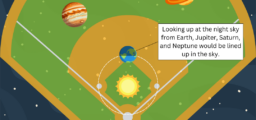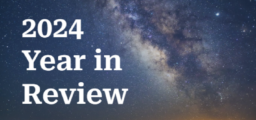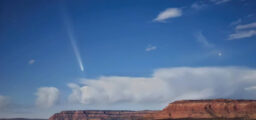Seeing Double (Stars)
August is an exciting month for stargazing because it brings the peak of the Perseid meteor shower! Stellar Vista Observatory (SVO) is so excited for it that we have added another star party to our calendar on Sunday, August 11th at 9:15pm at the Nomad Cafe, just north of Kanab on Highway 89. Come for the meteors, stay for the Moon and the music. If it’s cloudy that night, we will hold the star party on Monday, August 12th, instead.
Another reason the summer is a great time to stargaze is because you can see some beautiful double stars high in the sky. If you have seen a movie or read a book that refers to having two suns in the sky, that would be a double star system. A planet orbiting around those stars would see two suns rising and setting each day!
These star systems typically come in two types – binary and optical doubles. Binary stars are two stars that are gravitationally bound and orbit each other, so they will always be together. Optical double stars only appear to be close together when viewed from Earth, but in reality, they are extremely far apart from one another and are not affected by one another’s gravity.
Here are some nice doubles visible in the night sky this time of year:
Mizar and Alcor: Located in the middle of the handle of the Big Dipper, this pair can be seen with the naked eye. The Roman army used those two stars as an eye test to determine whether you had sharp enough vision to be an archer. Do you have what it takes?
Mizar: Didn’t we already mention this one? Well, Mizar itself is actually a binary system as well, and with a telescope you can see its companion star. Come to our next star party, and we’ll show you!
Albireo: A gorgeous double star set – one blue, one yellow – in the constellation Cygnus, the swan.
T Coronae Borealis: This binary star system is not very bright, so you can’t see it with the naked eye, but every 80 years, one of the stars experiences what is called a “nova” and combusts like a firecracker, burning so bright that we can see what looks like a new star for 3-7 days. It’s actually due to happen any day now!
Images Source: Stellarium
Aside from being a fun target for a telescope or binoculars, double stars also help astronomers learn about measuring the mass of stars and about stellar evolution.






Comments are closed.